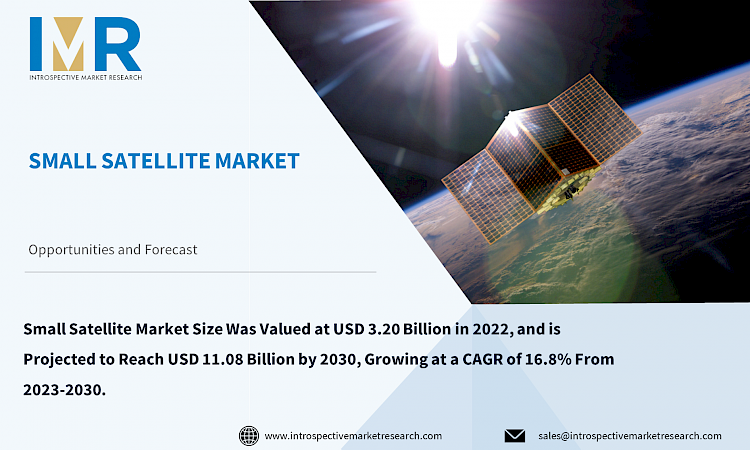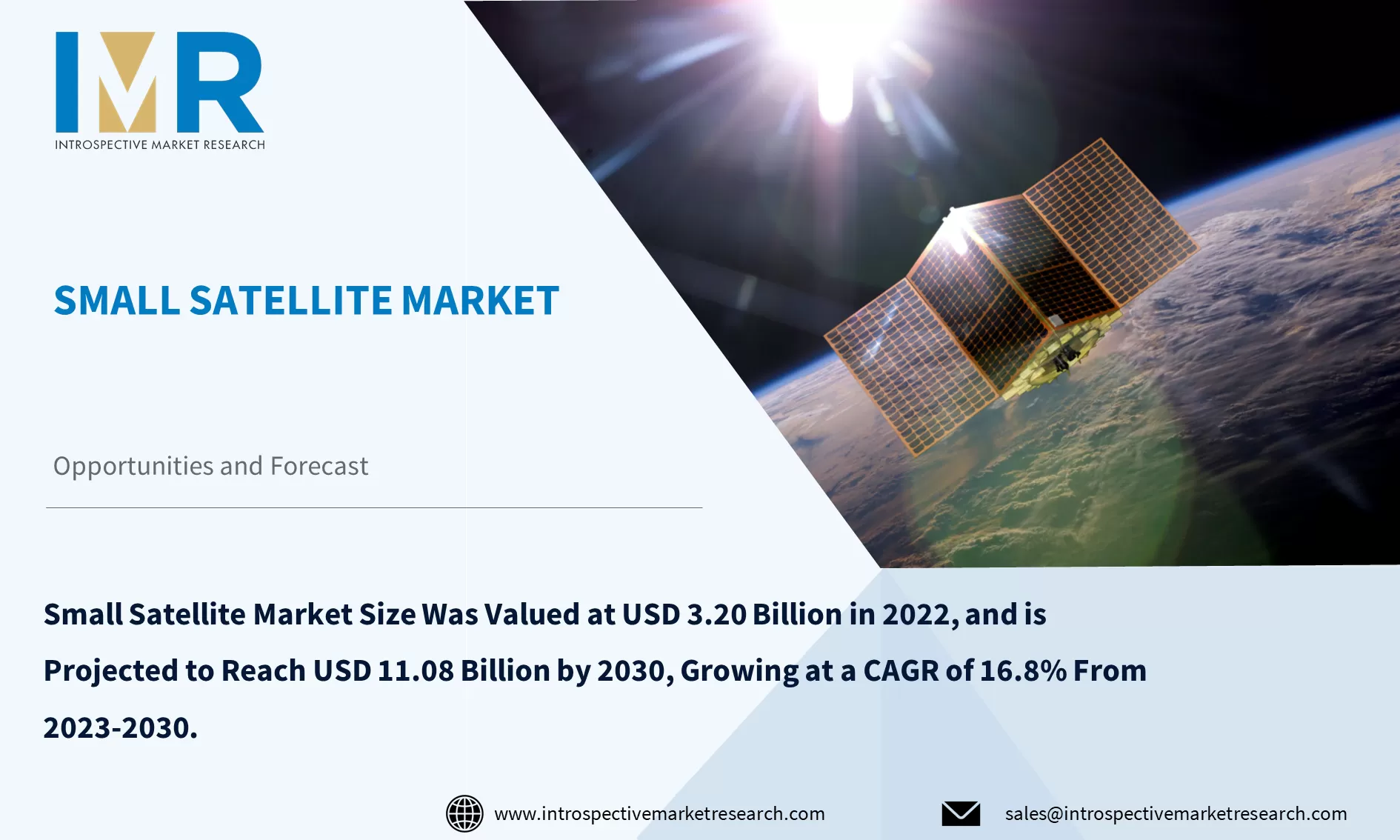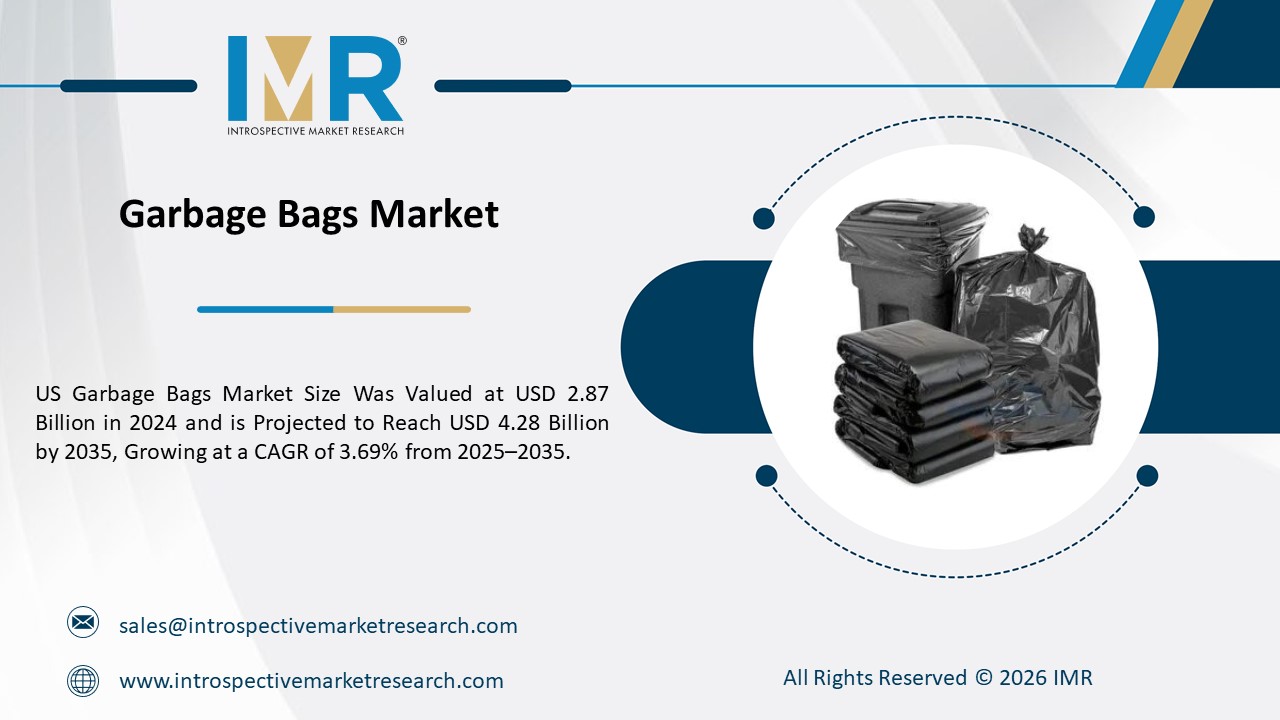
Market Overview:
Small Satellite Market Size Was Valued at USD 3.20 Billion in 2022, and is Projected to Reach USD 11.08 Billion by 2030, Growing at a CAGR of 16.8% From 2023-2030.
The small satellite is a disruptive technology in space industries. Traditionally, space industries were dominated by satellites which have thousands of kilograms and are bulky and expensive. Small satellites denote a new generation of miniaturized satellites that, by taking advantage of modern technologies (e.g., integrated circuits, digital signal processing, MEMS, and additive manufacturing), can achieve a significant reduction in volume, mass, development time, and cost of satellites. The launch of the first artificial Earth ?small? satellite, Sputnik 1, triggered the space race in 1957. In the decades that followed, there was the development of increasingly larger satellites to provide reliable services from space over extended periods. Since then, with the increasing demand for radio-frequency spectrum and satellite-orbit usages and sustained growth of technological breakthroughs and innovation of space communication along with the booming capabilities in satellite manufacturing, a dramatic rise in the development of small satellites and systems has been witnessed, especially over the last ten years. The small satellite industry is experiencing an era of unprecedented change.
Top Key Players Covered in The Small Satellite Market:
- SpaceX (USA)
- Planet Labs (USA)
- Blue Origin (USA)
- OneWeb (UK)
- Spire Global (USA)
- Rocket Lab (USA/New Zealand)
- BlackSky (USA)
- Airbus Defense and Space (France)
- Lockheed Martin (USA)
- Northrop Grumman (USA)
- Boeing (USA)
- Surrey Satellite Technology Ltd (UK), and Other Major Players
Market Dynamics and Factors:
Small spacecraft have been an integral part of space study, exploration, and commercialization since humankind?s first steps into low Earth orbit with Sputnik-1 and Explorer-1. With generally lower complexity and fewer payloads, small satellites can be produced at an increased cadence than larger ones. Rapid development in small satellites provides organizations with more agility in meeting requirements and adapting to new technologies for space exploration missions, these factors drive the growth of the small satellite market. Small Satellites are Affordability, lower construction, launch, and operating costs, making remote sensing and space exploration more accessible to companies and organizations of all sizes. Also, relatively short development and launch times for small satellites allow for faster deployment of space missions. these factors booming the small satellite market. Small satellites offer new opportunities to address the core observational requirements of both operational and research missions for earth observation. Small satellites, in particular single-sensor platforms, provide great architectural and programmatic flexibility. They offer attractive features with respect to design, observing strategy, faster "time to science" for new sensors, rapid technology infusion, replenishment of individual failed sensors, and robustness about budget and schedule uncertainties. Detailed data on environmental indicators including glacier melt, deforestation, sea level rise, and changes in land use can be obtained by small satellites outfitted with sophisticated instrumentation and high-resolution imaging sensors. For scientists, decision-makers, and environmentalists tackling climate-related issues in the future, this data is precious.
The Small Satellite Market Report Highlight:
- By Type, the growth of the mini Satellite market will be driven by the segment, Minisatellites are generally more affordable to design, build, and launch compared to larger satellites. Their smaller size means they require fewer materials and components, which reduces manufacturing and launch costs.
- By End- Use, the Commercial segment is expected to dominate the market during the forecast period. Small satellites are used in the commercial sector widely for various purposes. Due to the expanding number of internet services and mobile users in 2022, the commercial category will hold the largest market share. The growing usage of small satellites for enemy surveillance is propelling the market forward. Commercial applications for small satellites include navigation, telecommunication, weather forecasting, and others.
- By Region, The North American region is anticipated to have the highest share of the Small Satellite market over the forecasted period. North American countries, particularly the United States, have a strong tradition of technological innovation and entrepreneurship. Many of the leading companies in the small satellite industry, such as SpaceX, Rocket Lab, and Planet Labs, are based in North America and have pushed the boundaries of what is possible with small satellite technology.
Key Industry Development:
In February 2023, Anuvu announced plans to utilize the ground infrastructure of Telesat for its small satellite constellation. Anuvu has planned to launch the fleet of the small satellite in mid-2023.
In February 2023, Dhruva Space signed an MoU with Comat to supply various components regarding solar power generation for smallsats. Dhruva Space is the first Indian space startup that delivers space solar arrays.
The Small Satellite Market Segmentation:
By Type
- Minisatellite
- Microsatellite
- Nanosatellite
- Pico-Satellites
- Femtosatellites
By Orbit
- Low Earth Orbit (LEO)
- Middle Earth Orbit (MEO)
- Geostationary Earth Orbit (GEO)
By Component
- Structures
- Payload
- Electric Power System
- Solar Panel and Antenna Systems
- Propulsion Systems
By Application
- Earth Observation and Remote Sensing
- Satellite Communication
- Science and Exploration
- Mapping and Navigation
- Space Observation
By End- User
- Commercial
- Academic
- Government
- Military
For this report, Introspective Market Research has segmented the Small Satellite Market based on region:
Regional Outlook (Revenue in USD Million; Volume in Units, 2023-2030)
North America
O The U.S.
O Canada
O Mexico
Eastern Europe
o Russia
o Bulgaria
o The Czech Republic
o Hungary
o Poland
o Romania
o Rest of Eastern Europe
Western Europe
o Germany
o UK
o France
o Netherlands
o Italy
o Spain
o Rest of Western Europe
Asia Pacific
o China
o India
o Japan
o Singapore
o Australia
o New-Zealand
o Rest of APAC
Middle East & Africa
o Turkey
o Saudi Arabia
o Qatar
o UAE
o Israel
o South Africa
South America
o Brazil
o Argentina
o Rest of SA





